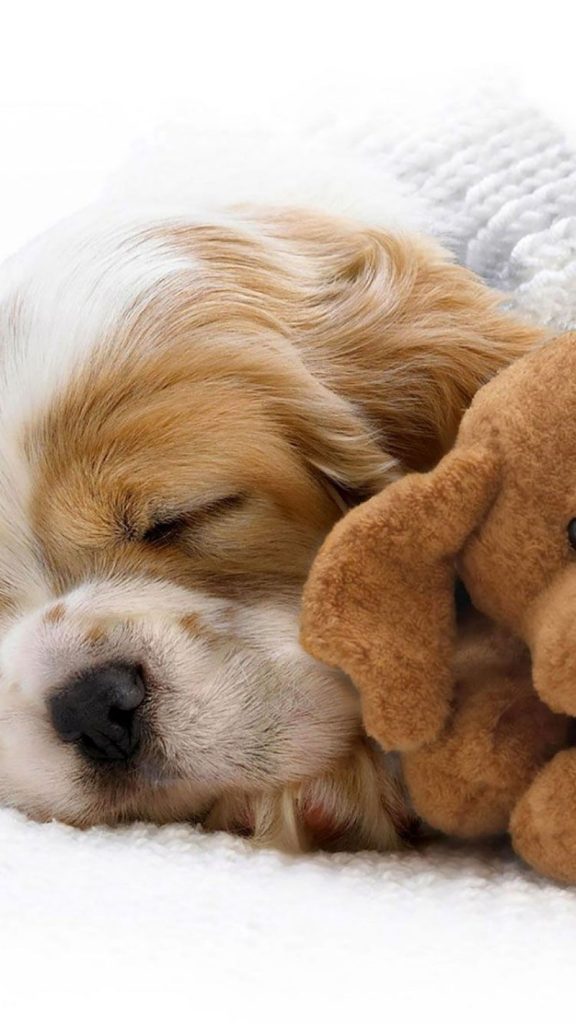Ah, the joy of welcoming a new puppy into your home! It’s an exciting time filled with endless moments of love, laughter, and a little chaos. As you embark on this adorable journey, one crucial element often overlooked is the importance of selecting the right toys. These aren’t just any old playthings; they’re the building blocks of your puppy’s growth, mental stimulation, and overall well-being. So, let’s dive into the world of puppy toys and why investing in quality is a decision that pays off in more ways than one.
Welcoming Your New Puppy: The Importance of the Right Toys
Bringing a new puppy into your home is an exciting time filled with endless love and potential adventures. As you prepare for your furry friend’s arrival, it’s essential to consider the right toys to keep your new companion entertained, healthy, and well-behaved. The right toys can play a crucial role in your puppy’s development, helping them learn, grow, and form a strong bond with you. Let’s delve into why choosing the right toys for your new puppy is so important.
Puppies are naturally curious creatures, and their mouths are often their primary tools for exploring the world around them. By providing a variety of toys, you can satisfy their natural instincts to chew, play, and interact. This not only keeps them occupied but also helps prevent destructive behaviors like biting furniture or shoes. The right toys can be a lifesaver for your home and your sanity!
One of the key benefits of selecting appropriate toys for your new puppy is the role they play in their dental health. Chewing is a natural way for dogs to clean their teeth and maintain good oral hygiene. Toys designed for this purpose can help prevent dental issues down the line, such as tooth decay or gum disease. Look for toys made from durable materials that are safe for your puppy to chew on without the risk of swallowing small pieces.
Socialization is another critical aspect of puppy development, and toys can help facilitate this process. Introducing your puppy to different types of toys can encourage them to interact with a variety of textures, shapes, and sounds. This exposure can help them become more adaptable and less prone to fear or aggression as they grow. Toys that encourage problem-solving and puzzle-solving skills can also stimulate your puppy’s mind, keeping them engaged and challenged.
Engaging in play with your puppy is not only beneficial for their development but also for strengthening the bond between you. Toys that allow for interactive play, such as tug-of-war ropes or treat-dispensing puzzles, can be a great way to spend quality time together. These activities can help your puppy learn about boundaries, respect, and the importance of gentle play, setting the stage for a well-behaved adult dog.
When it comes to selecting toys for your new puppy, safety should always be a top priority. Opt for toys made from non-toxic materials that are free from sharp edges or small parts that could pose a choking hazard. It’s also important to choose toys that are appropriate for your puppy’s size and chewing strength. A toy that is too small or too tough can lead to injury or frustration.
One of the most popular types of toys for puppies is the classic chew toy. These come in various forms, from rubber bones to rope knots. Chewing helps soothe teething pain, which is a common issue for puppies as their adult teeth start to emerge. Providing a designated chew toy can help redirect your puppy’s natural urge to chew on household items, saving your furniture and belongings from potential damage.
In addition to chew toys, interactive toys can be a fantastic way to keep your puppy’s mind active. Toys that require your puppy to use their senses and problem-solving skills can help prevent boredom and reduce the likelihood of destructive behavior. Puzzle toys, for example, can keep your puppy entertained for hours as they figure out how to retrieve treats or toys hidden within.
As your puppy grows, their interests and play styles may change. It’s important to regularly rotate their toys to keep things fresh and exciting. This can also help you identify which toys are favorites and which may not be as engaging. By keeping an eye on your puppy’s play habits, you can ensure they always have something to look forward to.
In conclusion, the right toys for your new puppy are not just a source of entertainment; they are an essential tool for their overall well-being. From promoting dental health to aiding in socialization and bonding, the right toys can make a significant difference in your puppy’s life. By taking the time to select toys that are safe, durable, and engaging, you’re investing in a happy, healthy, and well-adjusted adult dog. So, as you welcome your new puppy into your home, don’t underestimate the power of a good toy!
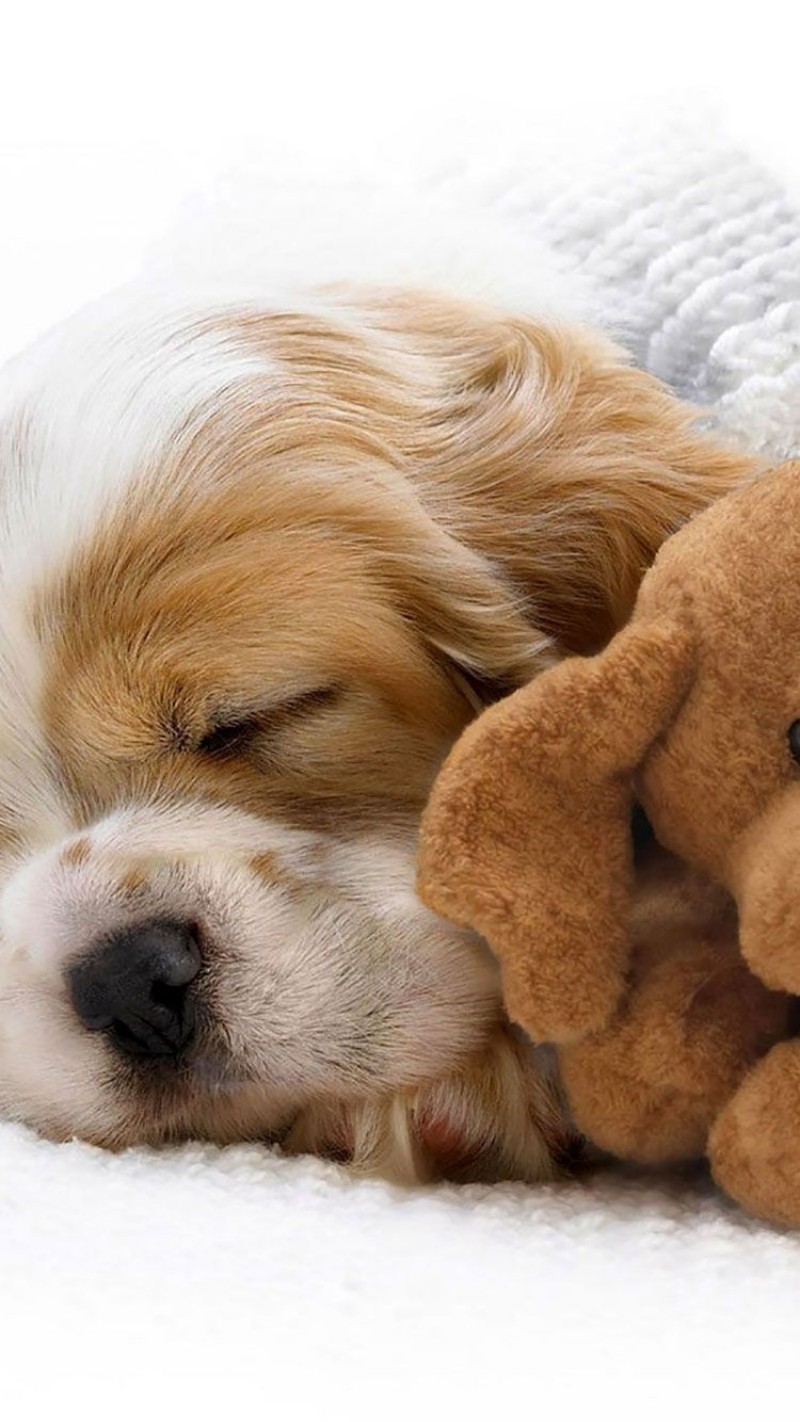
Top 5 New Toys for Your New Puppy to Explore and Enjoy
New puppies are a bundle of joy, curiosity, and endless energy! As you prepare to welcome your newest family member, one essential item to have on hand is a selection of engaging toys. Here’s a list of the top 5 new toys that your puppy will love to explore and enjoy:
-
Interactive Treat Dispensers: These smart toys are a game-changer for puppy owners. Filled with treats, these dispensers keep your furry friend occupied for hours. The puzzles require your puppy to use their problem-solving skills to get to the treats, which is not only entertaining but also mentally stimulating. Plus, it helps with teething pain and reduces the chances of destructive chewing.
-
Nylon Chew Toys: Chewing is a natural behavior for puppies, and providing them with appropriate chews can save your furniture from unwanted damage. Nylon chew toys are durable and can withstand rigorous gnawing. Look for those with textures that help clean your puppy’s teeth and massage their gums. These toys come in various shapes and sizes, ensuring that there’s something for every puppy’s preferences.
-
Tug of War Ropes: This classic game is a fantastic way to provide physical exercise and bond with your puppy. Tug ropes are easy to carry around, making them perfect for playtime both indoors and out. They help develop your puppy’s bite and can be an excellent outlet for their energy. Remember to choose a rope that’s the right size for your puppy to prevent swallowing hazards.
-
Fluffy Plushies with Tassels: While plush toys may seem like a soft and cuddly choice, they can also be incredibly entertaining for puppies. Look for plushies with tassels and other textures that stimulate your puppy’s curiosity. These toys are great for cuddling sessions and can become beloved companions. Plus, they can double as a teether when your puppy chews on them for relief.
-
Squeaky Toys: The classic squeaker is a hit with most puppies. These toys make a loud noise that excites your puppy, encouraging them to play and chase. They’re perfect for engaging in fetch or other interactive games. Squeaky toys also come in a variety of shapes and sizes, so you can find one that matches your puppy’s favorite activities.
When introducing new toys to your puppy, it’s important to supervise them at first to ensure that the toy is safe and doesn’t pose a risk of swallowing small pieces. Here are some additional tips to keep in mind:
-
Size Matters: Choose toys that are appropriate for your puppy’s size. If the toy is too big, they may not be able to carry it around easily or play with it as effectively. If it’s too small, there’s a risk of swallowing parts of the toy.
-
Regularly Inspect Toys: Keep an eye on your puppy’s toys and replace them if they start to show signs of wear and tear. Frayed edges, loose parts, or any damage could become a choking hazard.
-
Diversify the Toy Selection: Offering a variety of toys ensures that your puppy stays interested and engaged. Mix up the types of toys you provide to cater to different play styles and interests.
-
Encourage Play: Use your puppy’s new toys to engage in playtime. This helps with bonding and also helps your puppy understand the purpose of the toy.
Remember, the best toys are those that your puppy can’t resist. Observing your puppy’s preferences and playing together can help you choose the perfect selection of toys that will keep your new puppy happy, healthy, and entertained.
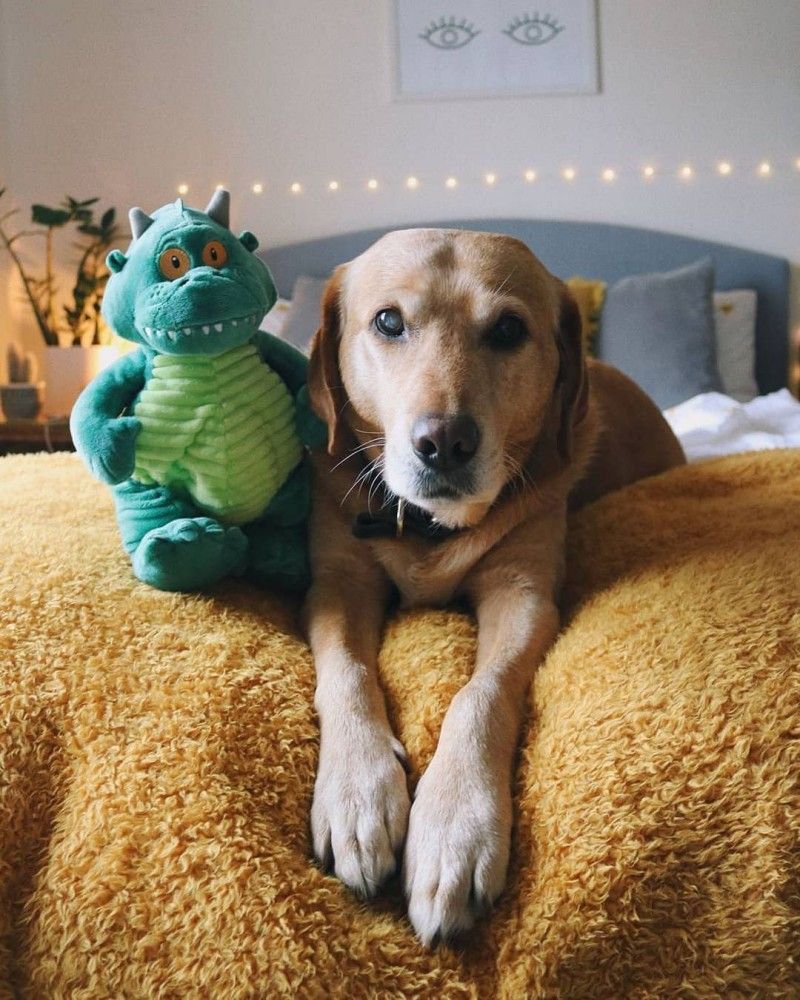
Interactive Toys: Keeping Your Pup Mentally Stimulated
Interactive toys are not just for fun; they play a crucial role in keeping your new puppy’s mind active and engaged. These toys are designed to stimulate your pup’s natural curiosity and problem-solving skills, which is essential for their overall development. Here’s a closer look at why interactive toys are a must-have for your new furry friend.
One of the standout features of interactive toys is their ability to mimic real-life scenarios. Imagine your puppy chasing a ball, fetching a stick, or digging in a sandbox—these are all natural behaviors that interactive toys can emulate. By engaging in these activities, your puppy gets to experience the thrill of the hunt, which is incredibly rewarding for their mental well-being.
For instance, puzzle toys can be a game-changer. They come in various shapes and sizes, allowing you to adjust the level of difficulty as your puppy grows. These toys often hide treats or small bones inside, which encourage your puppy to use their sense of smell and problem-solving skills to uncover the hidden rewards. This not only keeps them entertained but also provides a healthy outlet for their energy.
Interactive treat-dispensing toys are another fantastic option. They come with a variety of mechanisms that require your puppy to manipulate the toy to release treats. This can be as simple as pushing a lever or as complex as flipping switches and moving parts. The anticipation of getting a treat helps to keep your puppy focused and challenged, ensuring they stay mentally stimulated throughout their playtime.
Another great aspect of interactive toys is that they can help with training. For example, a treat-dispensing toy can be used to reinforce commands like “sit,” “stay,” or “come.” By pairing the toy with training sessions, you can create a fun and effective learning environment for your puppy. They’ll be more likely to stay engaged in the training process because they’re looking forward to the next treat-filled challenge.
Not all interactive toys are about treats and rewards. Some are purely for the sake of play and mental exercise. Take, for example, a plush toy with various textures and sounds. Your puppy will enjoy exploring the different surfaces and listening to the crinkling or jingling sounds, which can be soothing and entertaining.
Another type of interactive toy is the treat ball, which can be thrown and retrieved. These balls are often designed with different textures and can be filled with treats to encourage your puppy to play fetch. The act of fetching is not only a physical activity but also a mental one, as your puppy must remember where the ball landed and how to get it back.
Interactive toys also help to prevent boredom and destructive behavior. When a puppy is left alone with nothing to do, they may turn to chewing on furniture or other household items. By providing engaging interactive toys, you’re giving your puppy a constructive way to spend their time, reducing the likelihood of destructive behavior.
It’s important to note that interactive toys should be age-appropriate for your puppy. A toy that’s too difficult for a young pup may become frustrating, while one that’s too easy may not challenge them enough. Look for toys that have a range of difficulty levels, so you can adapt them as your puppy grows and their skills improve.
In conclusion, interactive toys are a vital part of your puppy’s daily routine. They provide mental stimulation, encourage learning, and offer a fun way to bond with your new companion. From puzzle toys to treat-dispensing balls, there’s a wide array of options to keep your puppy’s mind sharp and their tail wagging. Remember, the more engaged your puppy’s mind is, the happier and healthier they’ll be in the long run.
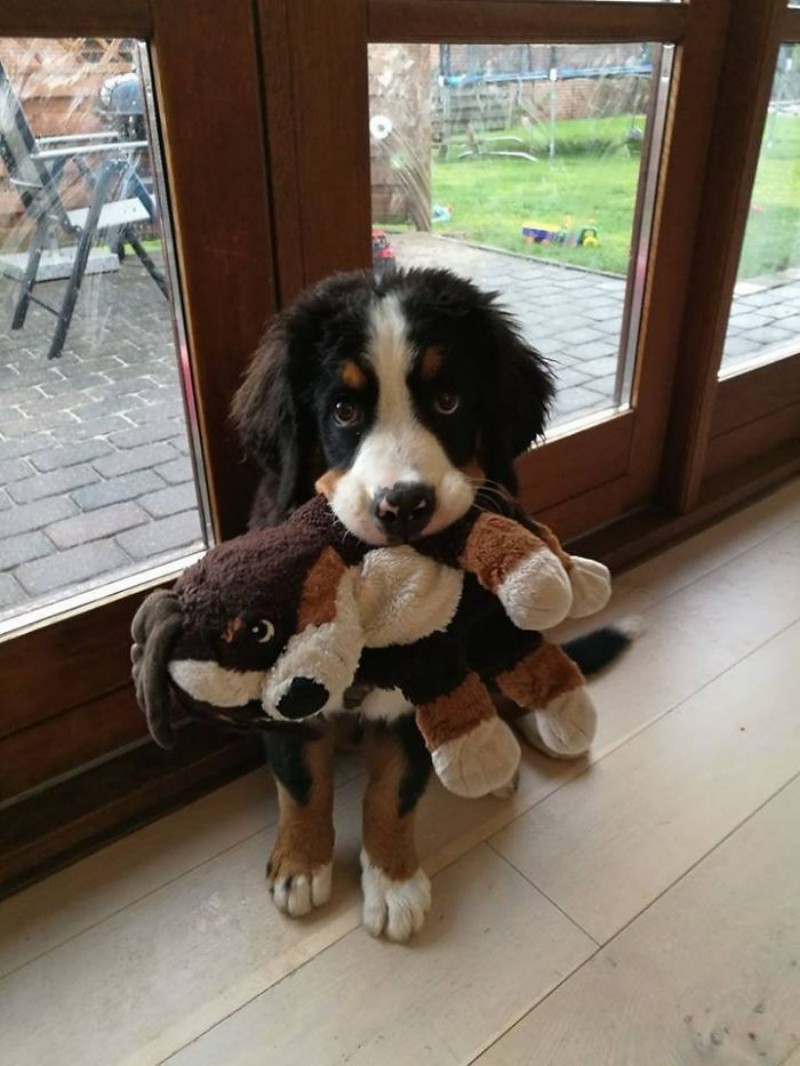
Classic Chews and Tug Toys: Building Strong Bonds with Your Puppy
Interactive toys are a fantastic way to engage your new puppy’s mind and ensure they stay mentally sharp. These toys often involve problem-solving, such as puzzle games, or they can encourage play that mimics natural behaviors like hunting or foraging. Here are a few reasons why interactive toys are so beneficial and some top picks for your furry friend:
-
Stimulating Cognitive Growth: Puppies have a natural curiosity that makes them perfect candidates for interactive toys. These toys help stimulate their brains, which is crucial for their overall development. By providing a challenge, interactive toys can keep your puppy’s mind engaged and prevent boredom.
-
Puzzle Toys for Problem-Solving Skills: Puzzle toys are excellent for teaching your puppy problem-solving skills. For instance, a treat-dispensing puzzle ball requires your pup to figure out how to move the ball in a certain way to release a treat. This not only keeps them entertained but also helps to refine their cognitive abilities.
-
Hunt-and-Seek Games: Toys that encourage your puppy to “hunt” for treats or toys are great for their natural instincts. A snuffle mat, for example, allows your puppy to search through a fabric-lined mat for hidden treats or toys, providing a sense of achievement and mental stimulation.
-
Tug-of-War for Social Interaction: Interactive tug toys are more than just fun; they can also strengthen the bond between you and your puppy. Tugging is a natural and healthy way for dogs to communicate and establish a social hierarchy. It’s important to remember to play by the rules, teaching your puppy not to pull too hard or bite too roughly.
-
Teaching Patience and Focus: Interactive toys that require patience, such as a treat ball that your puppy must paw at or nudge to move, can teach your puppy to focus on one task. This concentration can translate into better behavior and training during other activities.
-
Top Picks for Interactive Toys:
- Kong Toys: These versatile toys come in various sizes and are great for stuffing with treats or peanut butter. They can be frozen to provide a longer-lasting challenge for your puppy.
- Tug Toys: Classic rope or plush tug toys are perfect for a game of tug-of-war. They come in different textures and designs to keep your puppy interested.
- Treat-Dispensing Balls: These balls are designed to roll around and dispense treats as your puppy plays with them. They are great for indoor play and can keep your puppy busy for hours.
- Interactive Treat Mats: These mats have removable pieces that can be hidden under flaps, challenging your puppy to find their treats. They are also ideal for puppies with teething issues.
- Puzzle Feeders: These feeders require your puppy to manipulate them to get their food or treats, providing mental stimulation and slowing down mealtime.
-
Safety and Maintenance: When choosing interactive toys, always prioritize safety. Make sure the toys are made from non-toxic materials, have no small parts that could be swallowed, and are durable enough to withstand your puppy’s chewing. Regularly inspect and replace toys if they start to show signs of wear.
-
Consistent Playtime: Make interactive play a regular part of your puppy’s routine. This consistency helps to establish a healthy habit that can contribute to their mental well-being and overall happiness.
By incorporating interactive toys into your puppy’s playtime, you’re not only providing entertainment but also investing in their cognitive development. These toys can help keep your puppy engaged, challenged, and happy, leading to a stronger bond and a well-rounded companion.

Safe and Durable: Ensuring Your Puppy’s Playthings Last
Choosing the right toys for your new puppy is crucial, as these items can not only provide entertainment but also help in building a strong bond between you and your furry friend. Among the vast array of toys available, classic chews and tug toys stand out for their ability to engage your puppy’s natural instincts and foster a deeper connection.
Chewing is a fundamental behavior for puppies, as it aids in the eruption of their adult teeth and helps to clean their teeth and gums. Offering your puppy a variety of chew toys can be a delightful experience for both of you. Think about the following options:
-
Kong Toys: These versatile rubber toys are not only durable but also come in various sizes and shapes. You can stuff them with treats or kibble, encouraging your puppy to work for their snack. The unpredictable movement of the Kong toy can stimulate your puppy’s problem-solving skills.
-
Nylabone Chews: These are designed to withstand the rigorous chewing habits of puppies. They come in different textures, from hard to extra-hard, to cater to your puppy’s preferences and chewing intensity. The bone-like shape can help scrape away tartar and keep your puppy’s teeth clean.
-
Tire Chews: These are made from natural rubber and are excellent for puppies who love to chew on something with a lot of give. They can be frozen for extra enjoyment and can help soothe teething discomfort.
Tug toys, on the other hand, are perfect for playing games that mimic the natural hunting instincts of dogs. Here are some popular choices:
-
Tug-of-War Rope Toys: These are simple and classic, allowing you to engage in a game that simulates a natural predatory behavior. They are usually made from durable materials like cotton or rope, which can withstand the pulling and tugging of an energetic puppy.
-
Fleece Tug Toys: Soft and plush, these toys are gentle on your puppy’s teeth and can be a soothing alternative to more abrasive materials. They’re also great for a good, old-fashioned game of tug.
-
Interactive Tug Toys: Some tug toys come with a treat compartment or a bell inside, adding an element of surprise and fun. These can be particularly engaging for puppies who are food-motivated or enjoy the sound of a bell.
When introducing these toys to your puppy, it’s important to observe their behavior and preferences. Some may prefer a hard chew, while others might enjoy a softer, plush toy. Here are a few tips to ensure a positive experience:
-
Monitor Your Puppy: Keep an eye on your puppy while they are playing with their toys to ensure they are not ingesting small pieces or parts that could pose a choking hazard.
-
Rotate Toys: Regularly switch out your puppy’s toys to keep the playtime fresh and exciting. This can also help prevent your puppy from becoming bored with the same items.
-
Use Toys for Training: Incorporate toys into your training sessions to reinforce commands and teach your puppy new skills.
-
Teach Boundaries: Teach your puppy that their toys are for playtime and not for carrying around or sleeping with. This helps maintain the toy’s longevity and keeps the playtime experience focused.
The bond between a puppy and their owner is often strengthened through shared activities, and classic chews and tug toys can be a powerful tool in this endeavor. By choosing the right toys and engaging in play, you’re not just providing entertainment for your puppy; you’re also investing in a lasting friendship filled with fun and learning.
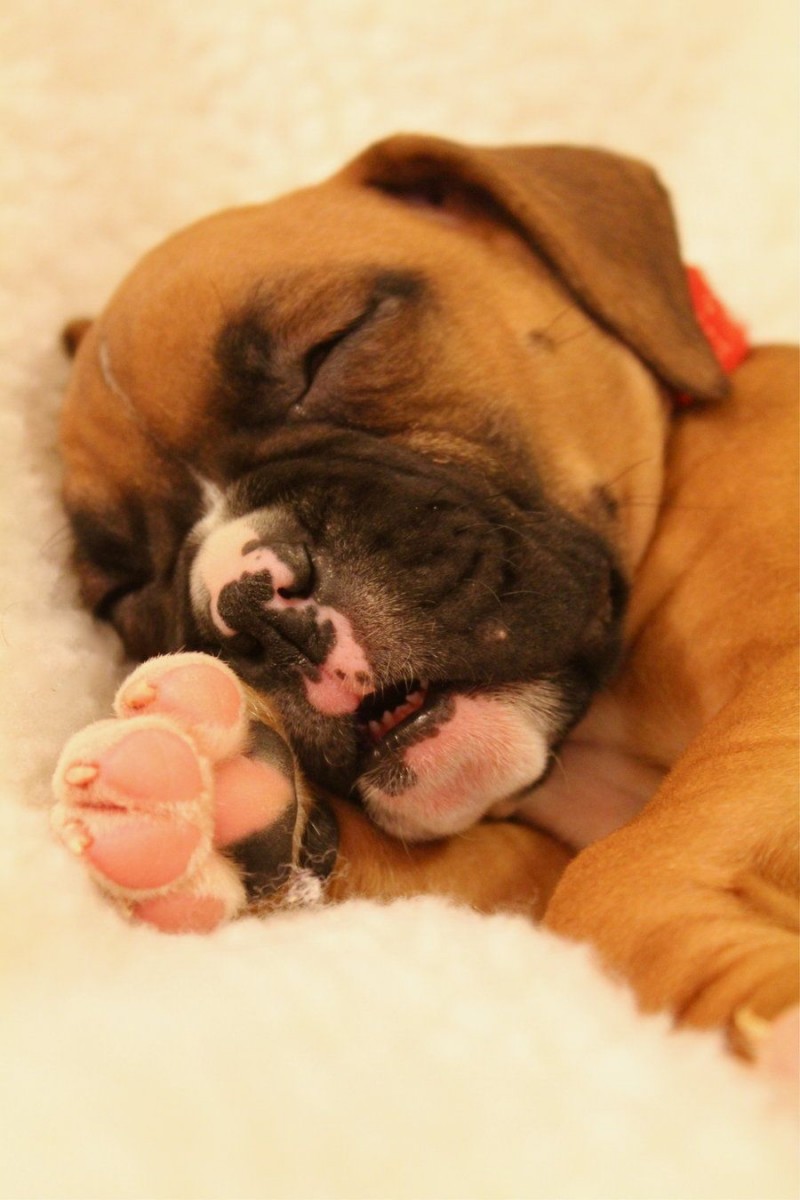
How to Introduce New Toys to Your Puppy’s Routine
Introducing new toys to your puppy’s routine is a delightful experience that can bring both joy and learning. Here are some thoughtful steps to ensure the transition is smooth and beneficial for both of you:
6.1. Start SmallBegin with a single toy, perhaps one that has a familiar scent or texture from the breeder or a previous home. This helps your puppy adjust to the new item without being overwhelmed by a plethora of options.
6.2. Place Toys StrategicallyPut the new toy in an area where your puppy spends most of its time. This could be their bed, a corner of the living room, or even their crate. The familiarity of the space can make the toy more inviting.
6.3. Offer GuidanceWhen you see your puppy showing interest in the new toy, gently encourage them to interact with it. Use a calm and encouraging tone to show that this is a positive experience.
6.4. Be PatientPuppies may take time to understand what the toy is for. If they chew on it, don’t immediately take it away. Let them explore and learn. This process can help them develop problem-solving skills.
6.5. Supervise PlaytimeObserve how your puppy plays with the new toy. It’s important to ensure that the toy is safe and appropriate for their chewing habits. Supervision can also prevent any accidental ingestion of small parts.
6.6. Introduce Toys During Routine ActivitiesIncorporate toy time into your puppy’s daily routine. For example, during mealtime, you can place their food bowl in a different location with a toy nearby. This can encourage them to engage with the toy before eating.
6.7. Rotate ToysDon’t keep the same toy out all the time. Rotate them to keep your puppy’s interest piqued. This can prevent boredom and ensure they get to enjoy a variety of textures and types of play.
6.8. Use Toys as a RewardWhen your puppy follows commands or behaves well, offer a toy as a reward. This can reinforce good behavior and make the toy a positive association.
6.9. Monitor for Wear and TearRegularly check the toys for any signs of damage. Puppies can be quite rough with their toys, so it’s crucial to replace them when they start to show signs of wear, especially if they are made of fabric or have small parts that could pose a choking hazard.
6.10. Create a Toy ScheduleEstablish a regular schedule for toy time. Consistency can help your puppy understand when it’s playtime and can also help them manage their energy levels throughout the day.
6.11. Teach the “Leave It” CommandTeach your puppy the “leave it” command to prevent them from chewing on things they shouldn’t. When they show interest in a new toy, use this command to encourage them to ignore other tempting items.
6.12. Encourage Social PlayIf you have other pets, introduce the new toy to them as well. This can foster social play and bonding among your pets. Always supervise to ensure that the toys are suitable for all pets and that there are no aggressive behaviors.
6.13. Be Mindful of SensitivitiesSome puppies may be sensitive to certain materials or textures. Pay attention to how your puppy responds to the new toy and be prepared to switch if they show discomfort or aggression.
6.14. Maintain CleanlinessKeep the toys clean and free of bacteria. This is especially important if the toys are frequently chewed or used for eating. Regular cleaning can extend the life of the toys and keep your puppy healthy.
6.15. Personalize the ExperienceLastly, personalize the introduction of new toys to your puppy. Remember that each dog is unique, and what works for one may not work for another. Observe your puppy’s preferences and adapt your approach accordingly.
By carefully introducing new toys into your puppy’s routine, you can provide them with a world of entertainment and learning opportunities. It’s a wonderful way to deepen your bond and ensure that your furry friend grows up with a variety of stimulating playthings.

The Role of Toys in Your Puppy’s Development
Understanding the importance of toys in your puppy’s development is akin to providing them with a toolkit for their growing minds and bodies. Toys aren’t just for entertainment; they are instrumental in shaping your puppy’s behavior, social skills, and physical health. Here are some insights into how toys play a pivotal role in your puppy’s development:
Puppies learn through play, and their toys can teach them a multitude of skills. When your furry friend chews on a toy, they’re not just satisfying their teething needs; they’re also engaging their jaw muscles, which is crucial for their dental health. The act of chewing can help prevent dental issues like tooth decay and gum disease later in life.
The texture and shape of a toy can also stimulate your puppy’s sense of touch. Soft, plush toys can provide a comforting presence, while tougher, rubbery ones can encourage more aggressive play and help with the natural instincts of a puppy to explore and bite. This tactile exploration is essential for your puppy to understand their environment and themselves.
Socialization is a key part of puppy development, and toys can aid in this process. By introducing toys that mimic the presence of other dogs or humans, your puppy can practice social interactions without the stress of real-life encounters. Soft toys can be used to simulate play sessions with another dog, teaching your puppy how to communicate and engage appropriately with others.
Intellectual stimulation is another critical aspect of toy use. Puzzle toys, for example, require problem-solving skills. These toys can keep your puppy’s mind active, reducing the likelihood of boredom and destructive behavior. As your puppy figures out how to use these toys, they’re also developing cognitive abilities that will serve them well throughout their life.
Toys that encourage movement and physical activity are vital for maintaining a healthy weight and preventing obesity. Fetch toys, for instance, can be used in play sessions that get your puppy up and running. This exercise is not only good for their cardiovascular health but also helps to develop coordination and balance.
One of the most profound roles toys play in puppy development is the fostering of emotional well-being. A puppy that is well-supplied with toys is less likely to experience separation anxiety or become overly anxious in new situations. A favorite toy can provide a sense of security and comfort, especially during periods of transition or stress.
As puppies grow, their play habits can evolve. It’s important to have a variety of toys that cater to different stages of development. During the early stages, toys that are easy to manipulate and destroy are more appropriate. As they mature, they might be interested in more complex toys that challenge their growing intellect.
Teaching your puppy to play appropriately with toys also sets the stage for their behavior as adults. If they learn to respect their toys and use them as tools for play and learning, they are less likely to chew on furniture or other inappropriate items. This can prevent costly repairs and save you from a headache or two.
Another aspect of toy play is the bonding experience it creates between you and your puppy. Engaging in play sessions can strengthen the human-animal bond, making your puppy more likely to seek out your company and follow your commands. This interaction is not only beneficial for training but also for the overall happiness of both you and your puppy.
Toys can also be a tool for teaching your puppy about boundaries and acceptable behavior. For example, you can use a toy to redirect your puppy’s attention away from something they shouldn’t be doing, such as jumping on guests or digging in the yard. This method of redirection can be more effective than scolding or punishment.
In conclusion, toys are more than just playthings for your puppy; they are integral to their development. From physical health to cognitive skills, from socialization to emotional well-being, toys play a multifaceted role in shaping your puppy into a well-rounded and contented adult dog. By choosing the right toys and engaging in regular play sessions, you’re not only providing entertainment but also investing in the future of your four-legged companion.

Why Investing in Quality Toys for Your New Puppy is a Wise Decision
Investing in quality toys for your new puppy is not just about providing entertainment; it’s a strategic choice that can shape your furry friend’s growth and well-being. Here’s why it’s a wise decision:
Puppies are like sponges, absorbing everything around them. The toys they play with can influence their behavior, social skills, and even their physical development. High-quality toys are designed with safety and durability in mind, ensuring that they can withstand the playful energy of a growing pup.
High-quality toys often come with features that encourage problem-solving. Interactive puzzles, for instance, challenge your puppy to figure out how to get treats or toys out of them. This cognitive engagement is crucial for preventing boredom and promoting mental stimulation, which is just as important as physical exercise for a puppy’s development.
A new puppy’s world is filled with new sights, sounds, and textures. Toys that offer various textures, like different types of plush, rubber, or rope, can help your puppy explore and understand their environment. This sensory exploration can lead to a well-rounded dog that is more adaptable to different situations and experiences.
Durability is key when it comes to puppy toys. A toy that can last through multiple play sessions not only saves you money in the long run but also means your puppy has a reliable companion. High-quality materials like natural rubber, heavy-duty plastic, and reinforced stitching ensure that your puppy’s favorite toys can withstand the occasional destructive tendencies of puppy play.
Toys that are easy to clean are a must-have for any puppy owner. Whether it’s a quick wipe-down or a thorough wash, maintaining the cleanliness of your puppy’s toys is important for preventing the spread of germs and keeping your pup healthy. Quality toys are often made with materials that are easy to clean and maintain, which is a bonus for both you and your puppy.
When your puppy is teething, providing them with appropriate chew toys can be a lifesaver for your furniture and shoes. Quality chew toys are designed to be durable and safe, offering your puppy a way to soothe their sore gums without damaging your belongings. Investing in these toys means you’re helping your puppy through a critical stage of development while protecting your home.
Socialization is a vital part of puppy development, and toys can play a significant role in this process. A new puppy may feel overwhelmed in social settings, but having a familiar toy can be a comfort. Additionally, toys can encourage your puppy to interact with other dogs or humans, fostering positive social experiences and building their confidence.
Puppies learn by imitation, and watching their owners play with toys can encourage them to join in. This shared playtime not only strengthens the bond between you and your puppy but also teaches them about appropriate behavior. High-quality toys can lead to more engaging play sessions that are fun for both of you.
Quality toys also help in teaching your puppy about boundaries. For example, a tug-of-war toy can be used to teach your puppy about gentle play and respect for personal space. These toys can become a tool for training, reinforcing good behavior and setting clear limits.
In the end, investing in quality toys for your new puppy is a reflection of your commitment to their overall health and happiness. It shows that you value their well-being and are willing to provide them with the best possible tools for growth. The return on this investment is a well-adjusted, mentally and physically healthy dog that will be a joy to have in your life. Remember, the toys your puppy plays with today can shape their behavior and experiences for years to come.

